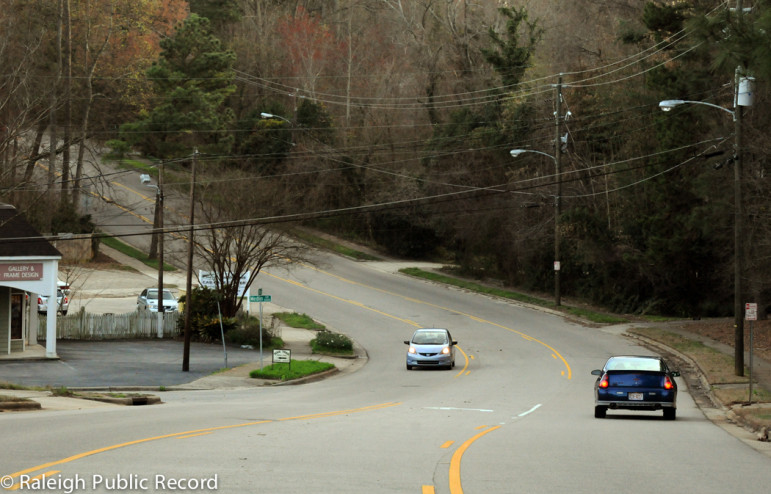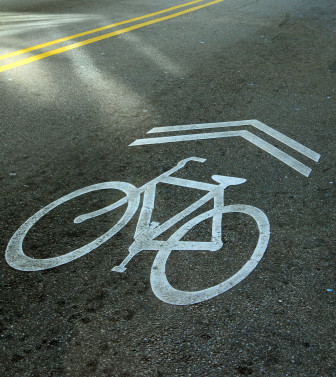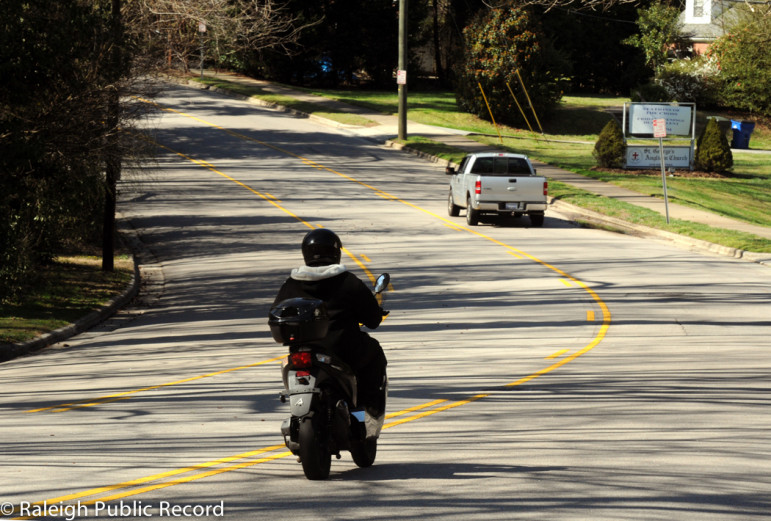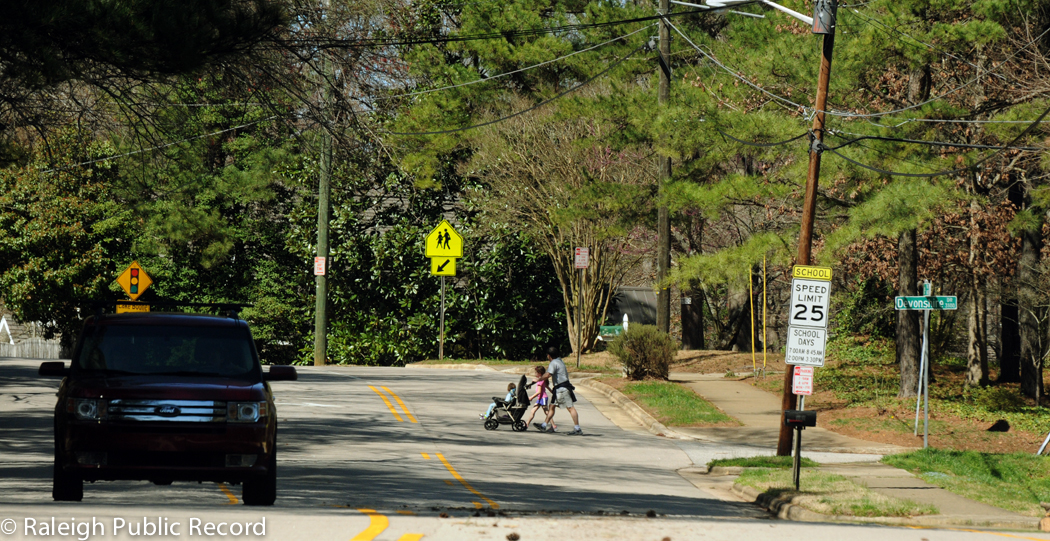Plans to put sharrows on a stretch of Dixie Trail have been put on hold so that city Transportation Planning Staff can explore the possibility of removing some on-street parking and the center turn lane to make room for dedicated bike lanes.
Staff had recommended that sharrows be painted on the stretch of Dixie Trail from Wade Avenue to Lake Boone Trail and maintain the existing on street parking. Members of the Bicycle and Pedestrian Advisory Commission (BPAC) felt that the road was too dangerous for bicyclists and warranted dedicated bike lanes.
“I personally feel the city needs to do a little more engineering or figure something out,” said Commission Chair Alan Wiggs.

Karen Tam / Raleigh Public Record
Dixie Trail, at about the center point of the section north of Wade Avenue.
He specifically asked staff to look at the implications of removing the center turn lane and restricting parking to one side in specific areas. Members delayed a vote on the project and will have a special meeting to discuss staff’s findings.
Bicyclists in attendance at last Thursday’s meeting advocated for dedicated bike lanes for at least the uphill portions of the road.
“The northern end [of Dixie Trail] is brutal on a bike,” said avid bicyclist Sam Bennett, who rides Dixie Trail often with his young son in tow. “It struck me as a natural place to put bike lanes.”
Bike lanes are six-foot-wide lanes specifically for bicyclists, as opposed to sharrows, which are markings that warn drivers that bikers are also likely using the road. In some cases, bike lanes — called climbing lanes — are installed on the uphill side of the road so that bicyclists have the space they need to safely climb the hill at slower speeds. Sharrows can then be installed on the downhill side, when riders are traveling more quickly and can keep up with neighborhood traffic.

Karen Tam
A sharrow on Hargett Street
Staff recommended installing these “climbing lanes” for the southern portion of Dixie Trail between Hillsborough Street and Wade Avenue, but were not included for the northern portion because staff didn’t have enough space for on-street parking and bike lanes.
The funding for the re-striping is a part of a $1.1 million federal grant that will mark 27 miles of bicycle infrastructure, but it has a tight timeline. If the project isn’t approved soon, “we may not have improvements on this section of Dixie for many years,” said Jennifer Baldwin, the city’s Bicycle & Pedestrian Coordinator. “Sharrows could be an interim improvement.”

Karen Tam / Raleigh Public Record
A man rides a motor bike on a section of Dixie Trail near Wade Avenue.
Both riders and residents are concerned with speeding cars on Dixie Trail. Some residents said that while they support bikers using the roads, the on-street parking acts as a traffic calming device. Removing the parking and adding the bike lane would encourage cars to drive even faster, they said, while sharrows could slow things down.
Dixie Trail resident Carolyn Penny said that traffic flies down the road during the hours of the current parking restriction and that, “Dixie Trail has a history of being a very quick street.”
Built as a two-lane road, Dixie Tail was at one time turned into four. The street is now a three lanes with a center turn lane.
“You’re asking cyclists to become the speedbumps and slow everyone down,” said one bicyclist as he addressed the Commissioners.
Neighbors are in favor of making the city more bike accessible, but “we don’t want to lose parking on the street,” said resident Bill Padgett.
A special meeting regarding the project hasn’t been scheduled yet, but any reduction in parking would need approval from the City Council. If BPAC members go with staff’s original recommendation, Council approval would not be needed.
